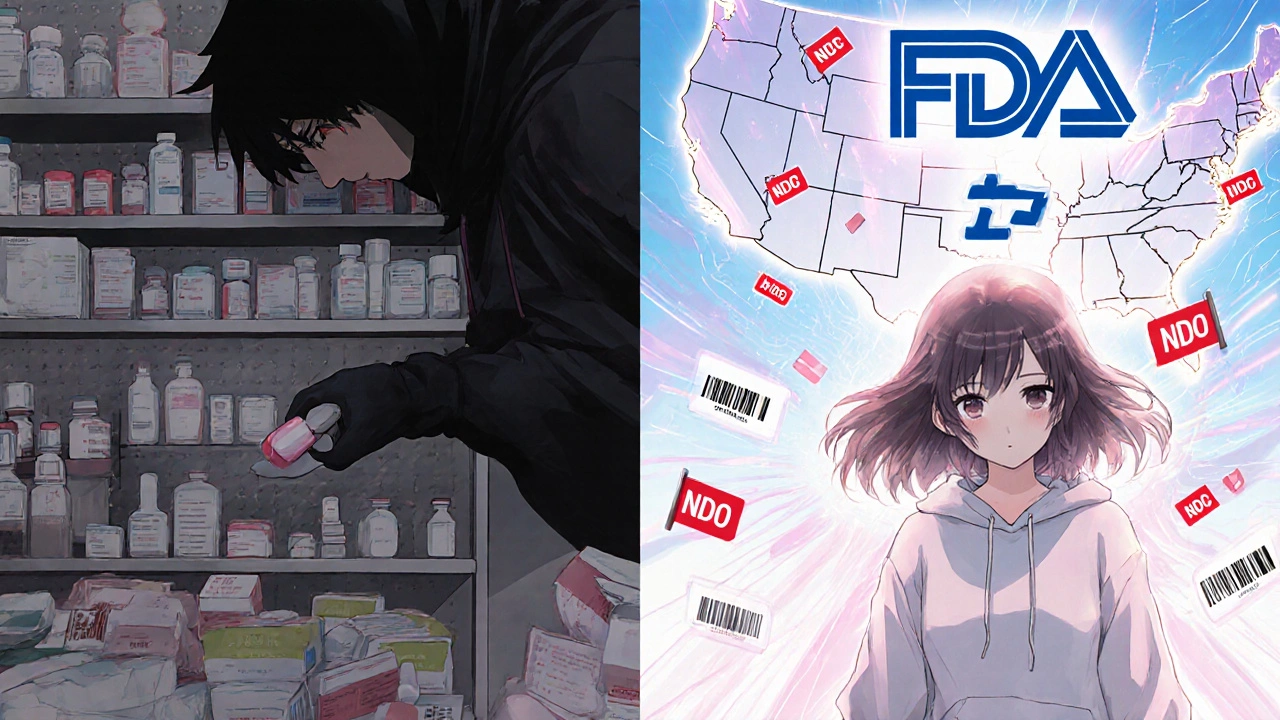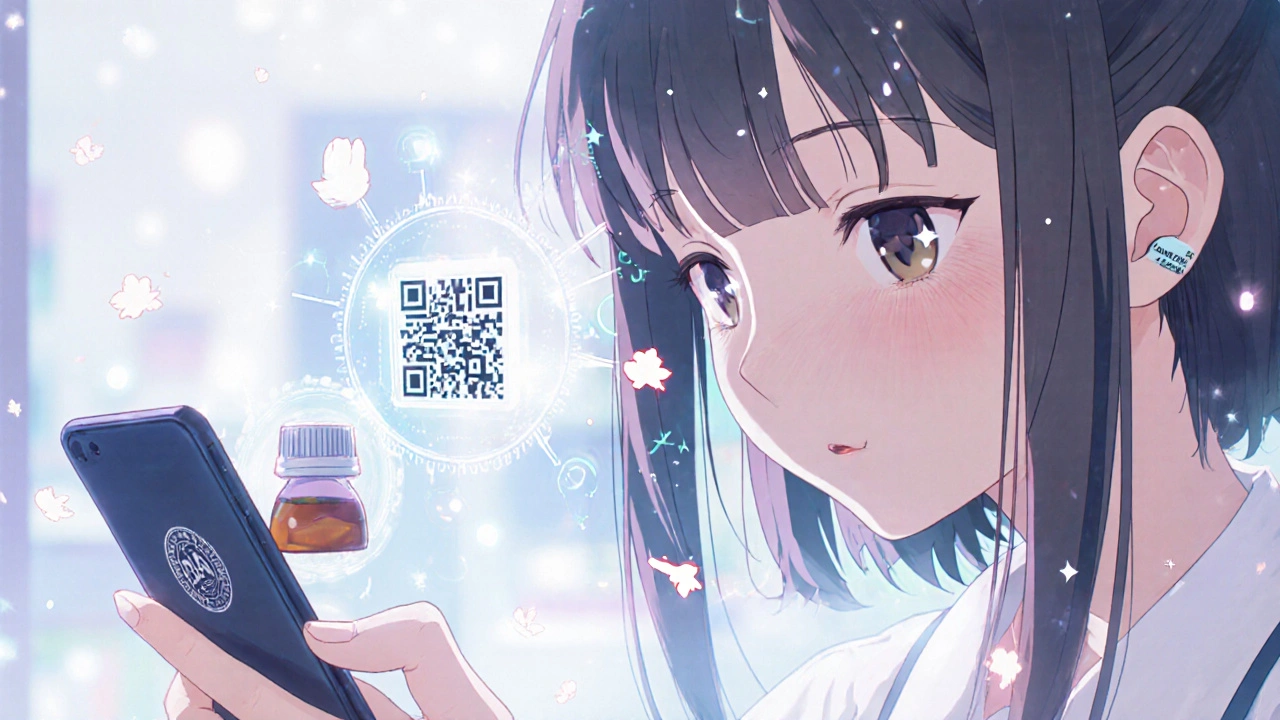Every year, millions of people take prescription drugs without ever checking if they’re real. That’s a risk you don’t have to take. The U.S. Food and Drug Administration (FDA) runs public databases that let you confirm whether a medication is approved, properly labeled, and legally distributed. These aren’t just for pharmacists or regulators - they’re tools anyone can use to protect themselves from fake pills that could be laced with fentanyl, missing active ingredients, or worse.
What the FDA Databases Actually Do
The FDA doesn’t just approve drugs - it tracks them from factory to pharmacy. Three main systems work together to make this possible: the NDC Directory, the Drug Establishments Current Registration Site, and the Electronic Drug Registration and Listing System (eDRLS). Together, they form a digital paper trail that shows who made the drug, where it was packaged, and whether it’s legally on the market.The NDC Directory is your first stop. Every approved drug in the U.S. gets a unique 10- or 11-digit National Drug Code. It’s broken into three parts: the labeler (who makes it), the product (what it is), and the package (how it’s sold). For example, a 10-pill bottle of metformin from a specific company will have a different NDC than the 30-pill version. That’s how the system tells them apart.
Here’s the catch: just because a drug has an NDC doesn’t mean it’s safe. Counterfeiters copy NDCs all the time. That’s why you need to cross-check the NDC with the Drug Establishments Current Registration Site. This tells you if the company listed as the manufacturer is actually registered with the FDA. If the company name matches but the address is in a residential neighborhood in China or the registration expired in 2020? Red flag.
How to Use the NDC Directory
You don’t need a pharmacy license to use the NDC Directory. Go to the FDA’s website and search by drug name, NDC, or company. Let’s say you bought a bottle of lisinopril at a discount online. The label says NDC 0054-4567-01. You type that into the NDC Directory.If it shows up with the exact brand name, strength, and manufacturer - great. But if the manufacturer is listed as "ABC Pharma LLC" and you’ve never heard of them, or if the product says "Tablet" but the label says "Capsule," that’s a mismatch. The FDA updates this directory every day. If the listing disappeared last week, the drug may have been pulled for safety reasons - or it was never approved to begin with.
Don’t rely on the packaging alone. Counterfeiters print perfect-looking labels. But the NDC Directory reveals the truth: the company behind it might not exist, or it might be registered for veterinary drugs only. In 2022, the FDA seized over 2 million fake pills from online sellers using this exact method.
Checking the Manufacturer’s Registration
Now, take that manufacturer name from the NDC Directory and plug it into the Drug Establishments Current Registration Site. This shows you the company’s physical address, registration status, and what types of drugs they’re allowed to make.Here’s what a real, compliant manufacturer looks like:
- Registration date: within the last year
- Address: a commercial or industrial building, not a PO box
- Product listing: matches the NDC exactly
- Status: Active
If the company is registered as a "wholesale distributor" but claims to be the manufacturer? That’s a violation. If the registration expired in 2021? That means they haven’t paid the annual fee - and the FDA doesn’t consider them legitimate anymore.
Real manufacturers renew their registration every year between October and December. If you see a registration date from 2019, it’s dead. And if the company is based in a country with no FDA oversight - like some parts of Southeast Asia or Eastern Europe - that’s another warning sign. In 2021, nearly 40% of counterfeit drugs seized at U.S. ports came from unregistered foreign facilities.

What the DSCSA Changed in 2023
Starting November 27, 2023, the Drug Supply Chain Security Act (DSCSA) kicked in fully. That means every prescription drug package sold in the U.S. must now have a unique, machine-readable identifier - like a QR code or barcode - that links to a digital record of its journey.This doesn’t mean you can scan your pill bottle with your phone and see its history. Right now, that system is built for pharmacies, distributors, and hospitals. But it’s the reason why fake drugs are harder to slip through now. Each time a package moves - from factory to warehouse to pharmacy - the barcode is scanned and verified. If the code doesn’t match the system, the package is quarantined.
Before 2023, counterfeiters could repackage expired or fake pills and send them through the system. Now, they need to generate valid, FDA-approved product identifiers - something that’s nearly impossible without access to a licensed manufacturer’s system. That’s why counterfeit drug incidents dropped 78% in companies that fully adopted DSCSA, according to Supply Chain Insights.
Red Flags You Can Spot Yourself
You don’t need to dig into databases every time you refill a prescription. But here are five signs your meds might be fake:- The price is way too low - 70% cheaper than at your local pharmacy
- The packaging looks off - blurry text, mismatched colors, missing lot numbers
- The pills look different - different shape, color, or imprint than before
- The website doesn’t have a physical address or phone number
- The pharmacy isn’t licensed - check your state’s board of pharmacy website
The FDA has warned about fake versions of popular drugs like Ozempic, Viagra, Xanax, and insulin. Some counterfeit Ozempic pens contain no semaglutide at all - just sugar water. Others have too much, causing dangerous drops in blood sugar. Either way, the results can be deadly.

Why Online Pharmacies Are Risky
The FDA estimates that 96% of online pharmacies selling drugs without a prescription are illegal. Many of them source from unregulated countries. Even if they claim to be "based in Canada," the drugs often come from China or India, repackaged and shipped through mail.Legitimate U.S. online pharmacies are accredited by the National Association of Boards of Pharmacy (NABP). Look for the VIPPS seal - Verified Internet Pharmacy Practice Sites. If it’s not there, assume the worst. The FDA has shut down over 10,000 illegal online pharmacies since 2010.
And don’t fall for the "free shipping" or "no prescription needed" ads. Those are bait. The FDA doesn’t approve any online pharmacy that sells controlled substances without a valid prescription.
What to Do If You Suspect a Counterfeit
If something feels off about your medication:- Stop taking it.
- Keep the packaging and pills - don’t throw them away.
- Call your pharmacist and ask them to verify the NDC and manufacturer.
- Report it to the FDA’s MedWatch program at 1-800-FDA-1088 or online at fda.gov/medwatch.
Every report helps. In 2022, over 1,200 counterfeit drug reports came from patients - not just doctors or pharmacists. The FDA uses those reports to track trends and target enforcement.
The Bigger Picture
Counterfeit drugs aren’t just a U.S. problem. Globally, they cost the industry over $200 billion a year. But the U.S. system is one of the most advanced. The FDA’s databases are the backbone of that defense. They’re not perfect - data entry errors, inconsistent NDC formats, and unregistered foreign suppliers still create gaps. But they’re the best tool you’ve got.Next time you pick up a prescription, take 30 seconds. Look up the NDC. Check the manufacturer. It’s not paranoia - it’s prevention. And in a world where fake pills can kill, that’s not just smart. It’s life-saving.


This is straight-up life-saving info. I had no idea you could check NDCs like this. Just looked up my metformin and it’s legit. 🙌
bro i just typed in my xanax bottle code and it showed up. mind blown. why dont more people know this??
This is just performative safety. The FDA database is full of outdated entries and loopholes. You think a QR code stops fentanyl pills? Wake up.
I find it concerning that you encourage laypeople to interpret regulatory databases without medical training. This could lead to dangerous self-diagnosis based on incomplete data.
i used to think fake pills were just a myth until my cousin ended up in the er. this post is the reason i now check every script. thanks for the clarity
THIS ISN’T JUST INFO - IT’S A WEAPON. If you’re buying meds online without checking the NDC, you’re playing Russian roulette with your organs. Stop being lazy. Your life isn’t a gamble.
The DSCSA implementation has been uneven across supply chain tiers and while the 78% reduction figure is cited it lacks contextual baseline data from pre-2023 enforcement metrics. The NDC directory also suffers from inconsistent labeler code assignment practices which may mislead non-specialist users
One must acknowledge the profound epistemological fragility of relying on bureaucratic databases as proxies for safety. The FDA, while ostensibly authoritative, remains a regulatory apparatus subject to political capture, budgetary constraints, and systemic inertia. To place one’s trust in an NDC code is to engage in a form of technocratic mysticism - mistaking bureaucratic compliance for ontological security. The real danger lies not in counterfeit pills, but in the illusion of control they afford us.